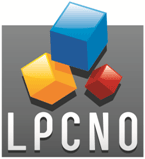STRAIN ENGINEERING OF SILICON FOR SPINTRONICS APPLICATIONS
NANOSCIENCE

Lab: LPCNO
Duration: NanoX master Internship (8 months part-time in-lab immersion)
Latest starting date: 02/01/2025
Localisation: Laboratory of Physics and Chemistry of Nano-Objects
INSA
135 av. de Rangueil,
31077 Toulouse cedex
Supervisors:
Xavier MARIE marie@insa-toulouse.fr
This research master's degree project could be followed by a PhD
Work package:
Despite decades of research in spintronics, demonstration of all-optical detection and control of electron spins in
silicon - still the most important and ubiquitous semiconductor in today's microelectronics industry - remains
elusive.
Many prototype devices for processing and transmitting quantum information are based today on this strategic
material. It is also in silicon that Georges Lampel's pioneering experiments were carried out in 1968 on optical spin
orientation in solids 1 , wherein it was shown that polarized electronic spins are produced by optical pumping with
circularly polarized light, yielding a dynamic polarization of Si29 nuclei. The Lampel’ studies have triggered very
active research on the use of polarized light to study and control the spin of electrons in various III-V, II-VI, and
group-IV semiconductors (eg, GaAs, CdTe, and Ge) and more recently in 2D semiconductors such as MoS 2 . The
optical techniques (luminescence, absorption, reflectivity) coupled with theoretical studies have made it possible
to discover the optical selection rules and the spin relaxation mechanisms in a large variety of semiconductor
structures 2 .
Surprisingly these great advances did not concern free electrons in bulk silicon for which precise optical studies are
more challenging since it is an indirect-gap semiconductor with weak phonon-assisted optical emission in the near
infrared. Recently we measured for the first time circularly polarized silicon luminescence after optical spin
orientation under both direct and indirect gap excitation conditions3 . These experiments lead to (i) the
determination of the optical selection rules for the different transitions assisted by phonon emission (TO, LO and
TA) and (ii) the measurement of the spin relaxation time of free electrons.
The objective of this internship is to apply strain to silicon in order to suppress electron spin relaxation. This
predicted4 but never measured effect could lead to concrete applications based on the optical control of the
electron spin degree of freedom with the most widely used material in microelectronics.
The main part of the work will consist in (i) designing experimental systems to apply biaxial compression or uniaxial
tension along a given crystallographic axis and (ii) measuring the strain amplitude by Raman spectroscopy. If the
results are conclusive, polarized photoluminescence experiments at low temperature will be implemented in order
to measure the electron spin properties.
References:
1. Lampel, G. Nuclear Dynamic Polarization by Optical Electronic Saturation and Optical Pumping in
Semiconductors. Phys. Rev. Lett. 20, 491–493 (1968).
2. Spin Physics in Semiconductors. vol. 157 (Springer Berlin Heidelberg, Berlin, Heidelberg, 2008).
3. X. Marie et al, Arxiv. 2407.18742 (2024)
4. Li, P., Trivedi, D. & Dery, H. Spin-dependent optical properties in strained silicon and germanium. Phys. Rev.
B 87, 115203 (2013)
Areas of expertise:
Semiconductor Physics ; Spintronics.
Experimental expertise in optics, laser, detectors, cryogenics...
Required skills for the internship:
The internship is mainly based on experiments; a strong taste for an experimental approach is
desired
